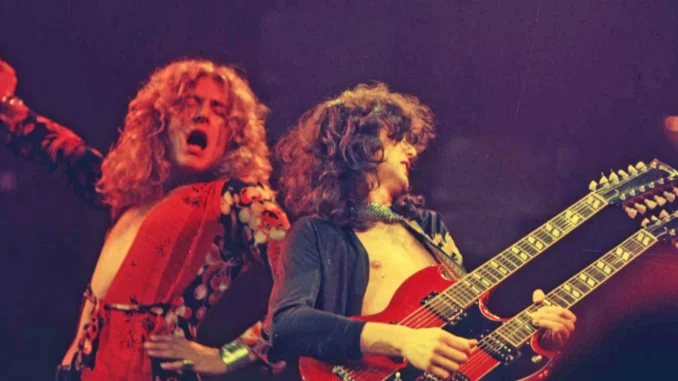
How a studio compressor became the secret ingredient in an iconic Led Zeppelin guitar moment – the story of Universal Audio’s 1176 compressor

Jimmy Page has always liked to use gear in unintended musical ways, but his experimentation with UA’s 1176 compressor led to one of the most iconic studio guitar tones in Led Zeppelin history.
There’s an argument to be made that the 1176 Peak Limiter is one of the most important bits of studio gear ever made. Launched by Universal Audio founder Bill Putnam in 1967, this studio compressor has become a bedrock of pretty much every recording studio, and a vital tool for a truly gobsmacking range of artists and producers – from Prince and Vangelis to Rick Rubin and Steve Albini.
“The 1176 has sustained UA’s reputation for tone and quality more than any other product,” says Will Shanks, Universal Audio’s Senior Product Designer. “Before the 1176 there was the 176 – that was a tube design, and the first to have dedicated attack, release and ratio controls. Bill Putnam wanted an extremely fast attack time with even greater range for gain reduction. He got there with the FET-based 1176, and the rest is history.”
Whether used to bring character to 50 Cent’s vocals, Kenny Beats’ samples or Travis Barker’s drums, the 1176 has played a part in countless iconic recordings, but it is the compressor’s use in guitar that’s perhaps its most interesting – because it shows the wonderful ability of musicians to take a piece of gear and utilise it in a way that its creator never intended.
Hair Of The Dog
Perhaps the most famous example of this regarding the 1176 is how Jimmy Page got the iconic guitar sound on Black Dog. It’s a sound that launched a thousand bands, but despite producer Andy Johns admitting that, “it sounds like some guy in the Albert Hall with a bunch of Marshalls” it was actually recorded with a pair of 1176s running straight into the desk.
“The guitar parts in Black Dog sound like nothing else,” Shanks exclaims. “Keep in mind, there are no guitar amps, just a pair of 1176s: one overdriven with no gain reduction, into another 1176 with all ratios pushed in. With Jimmy joyfully rushing the beat!”
But how exactly do you overdrive a compressor? Well, again it comes back to what we said up top about musicians taking gear and using it in ways the creator never intended. In the case of the 1176, Putnam surely never intended for users to push in all four of the unit’s compression ratio buttons at the same time, but when they did, some British studio engineers soon discovered that this ‘All Buttons’ mode actually created a wonderful harmonic distortion sound that was perfect for guitar. This trick was an insider secret amongst British studio engineers at the time, but Page’s Black Dog tone needed a little extra, as Johns explained back in 2003.
“I had been trying to get this sound from Buffalo Springfield for a long time and I met Bill House. He said, ‘I just put two of them in series.’ He didn’t really want to let me know what ‘they’ were. Anyways, he meant two 1176s in series, one of which has the compression buttons punched out, so it is like an amp. You hit the front of the next compressor really hard and make the mic amp distort a bit with the EQ —a bit of bottom to make it sing.
“I couldn’t have done it without the 1176s. There is not another compressor that will do that, because you can take out the compression stuff.”

Very nice post. I simply stumbled upon your blog and wanted to say that I’ve really enjoyed surfing around your blog posts.
After all I will be subscribing in your rss feed and I hope you write once more
soon!